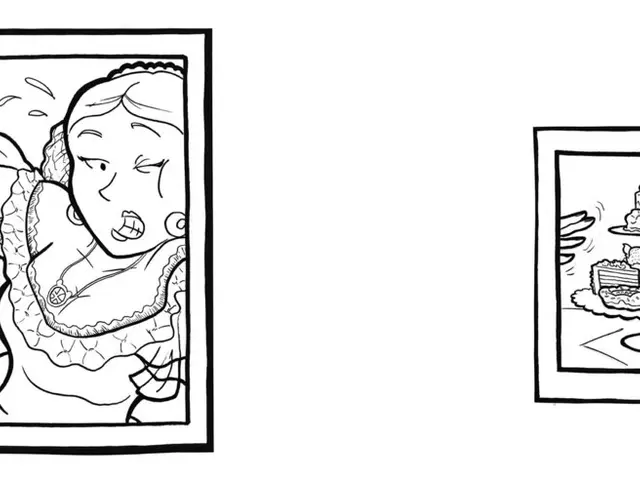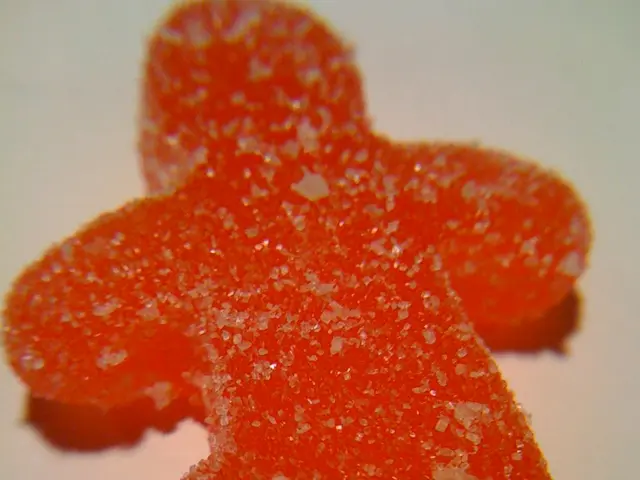Eliminating Cradle Cap in Four Simple Methods:
Inspecting your newborn's head is inevitable. So, when you spot those unwelcome yellow or white scaly patches on their scalp, it's natural to wonder what's going on. What you're looking at is cradle cap - a buildup of excess waxy skin that typically shows up between 2 and 4 weeks old and can last up to a year.
Now, you might be fretting about this annoying scalp situation. But fret not, for it's generally harmless and rarely requires medical attention. Cradle cap is technically a form of seborrheic dermatitis, known to cause stubborn dandruff in adults. It doesn't hurt, itch or cause pain, making it more of an eyepatch for parents, rather than a source of discomfort for the little one.
Up to 70% of infants develop cradle cap, so if you're in that camp, this guide is for you. Here are four tips to help you tackle the scalp situation at home:
- Moisturize: Grab a petroleum-based moisturizer, baby oil, or mineral oil, and slather a nickel-size amount onto your child's head around 30 minutes before bath time. This helps loosen the scales and prevents the oil from leaving your baby's hair feeling greasy. Give it a gentle massage with your fingers, pushing the oil under and around the clusters.
- Wash: Daily bathing is a great way to improve the condition of your baby's scalp. Use a gentle, unscented baby shampoo and help lift the loose scales with a washcloth. Keep in mind that if your baby has dry skin or eczema, daily bathing might not be ideal - follow your healthcare provider's advice.
- Brush: Gently brush your baby's scalp with a soft baby brush, comb, or toothbrush to remove any loosened scales. Take care not to scratch the delicate skin – skip using your fingernails.
- Picking: Avoid picking or forcefully pulling at dry scales, as this can cause irritation, infection, inflammation, or even scarring. Leave them until they're softened by the oil or shampoo, and repeat the process daily if necessary.
If the cradle cap doesn't seem to budge or gets worse despite your efforts, it's a good idea to consult your healthcare provider, who can assess the situation and suggest appropriate treatment, if needed. But remember, most cases of cradle cap will clear up on their own. Rest assured, your baby's scalp will soon return to its soft, smooth state.
Enrichment:- Coconut Oil: Apply coconut oil to the baby's scalp for moisturization and to help loosen flakes.- Tea Tree Oil: Dilute a few drops of tea tree oil with a carrier oil like coconut or olive oil for application.- Aloe Vera: Soothe the scalp with aloe vera gel, reducing irritation and inflammation.- Honey: Sparingly use honey for its antibacterial properties and to soothe the scalp.- Breast Milk: Some mothers apply breast milk to the scalp for its antibodies that might help soothe and heal the skin.- Gentle Shampoo: Use a mild cradle cap shampoo specifically designed for infants.- Olive Oil or Other Oils: Apply a gentle oil like olive oil to the scalp before bathing to help loosen flakes.- Soft Brushing: Gently brush the scalp with a soft-bristled brush to remove loose flakes.- Moisturizing Ointments: Apply gentle ointments containing ingredients like colloidal oatmeal or calendula after shampooing.- Harsh chemicals: Avoid harsh chemicals, as they can further irritate the scalp.- Rough scrubbing: Avoid rough scrubbing, as it can exacerbate the problem.- Consultation: Consult your healthcare provider if the condition doesn't improve despite home remedies.
- To aid in the treatment of cradle cap, consider incorporating coconut oil, which is known for its moisturizing properties and ability to loosen flakes, into your health-and-wellness routine.
- For a natural approach to skin-care, dilute a few drops of tea tree oil with a carrier oil like coconut or olive oil and apply it to your baby's scalp, as tea tree oil can help reduce inflammation associated with cradle cap.








